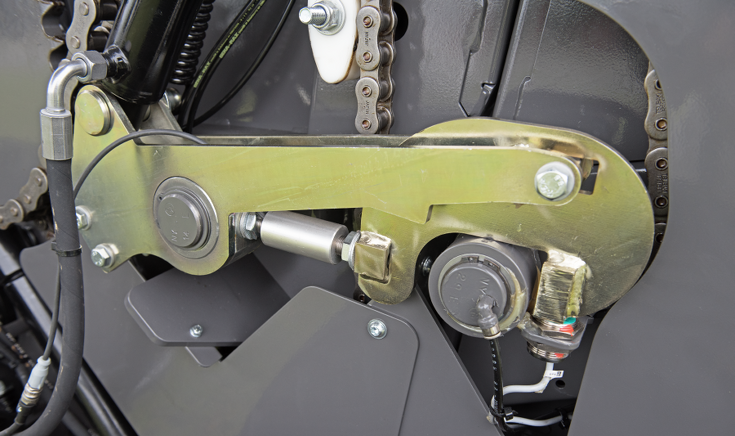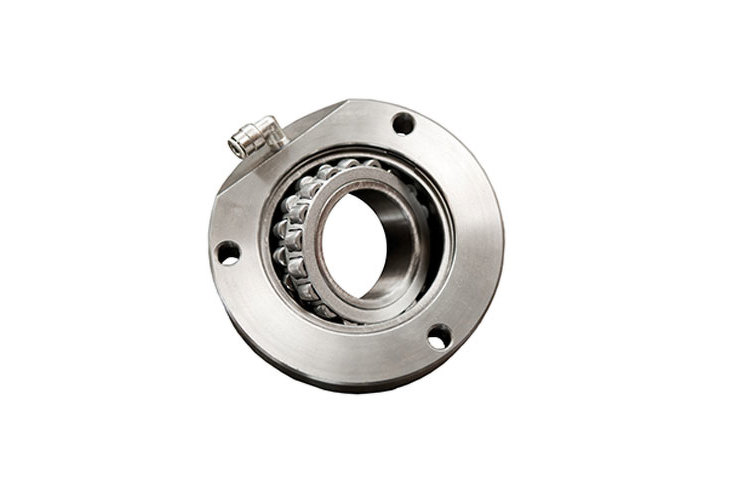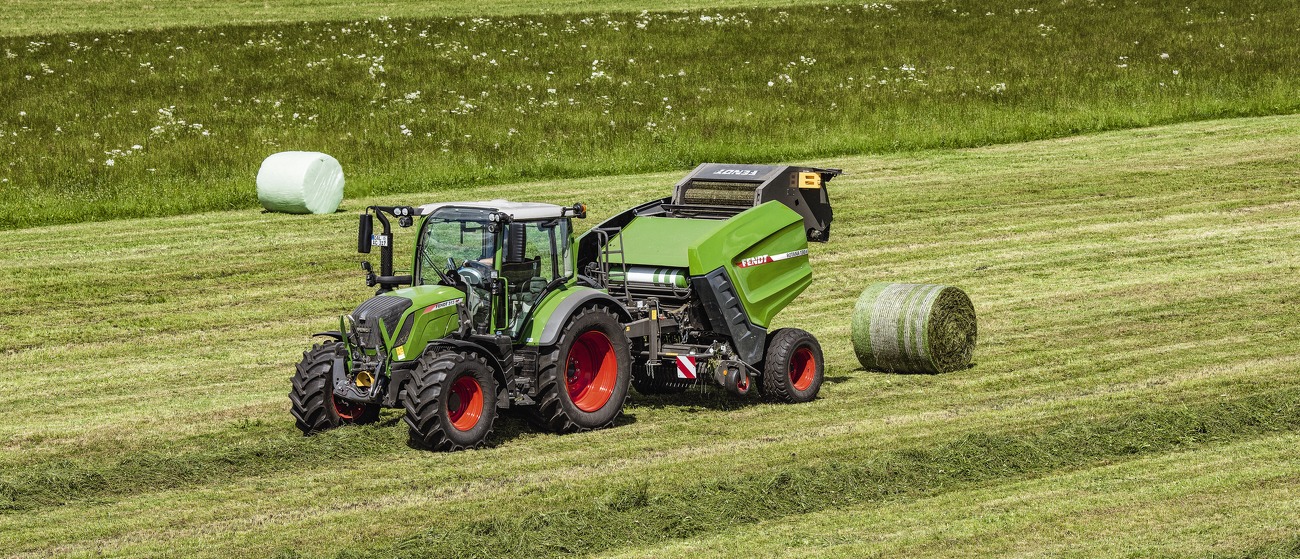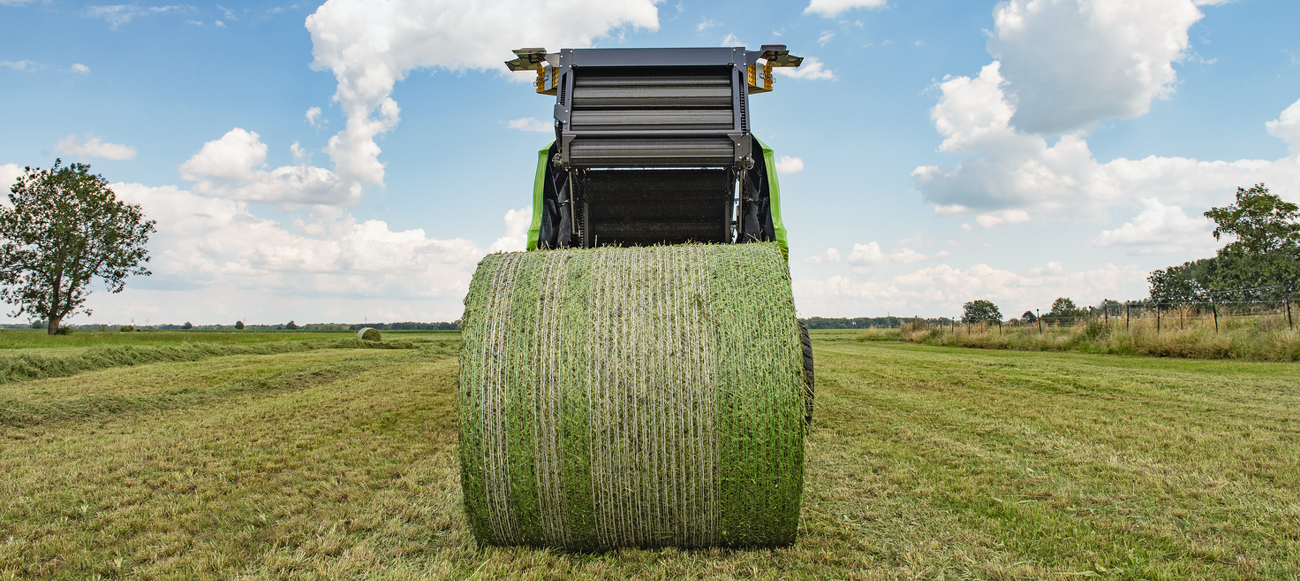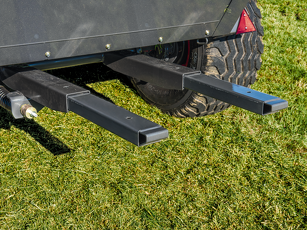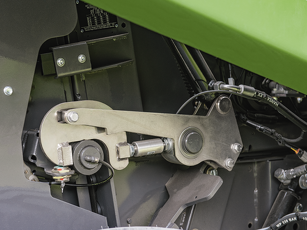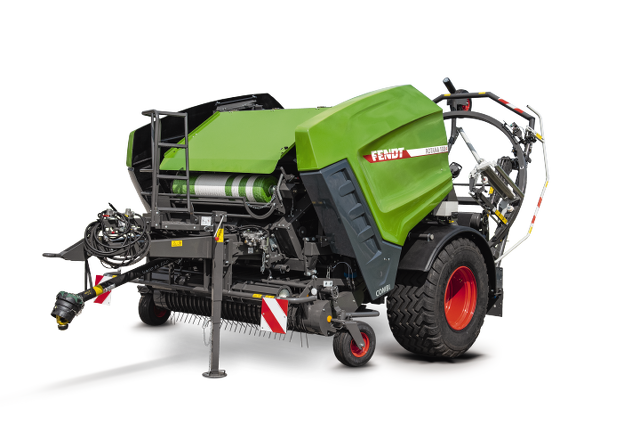The secret of the perfectly-compacted and even bales which are continuously produced using Fendt round balers lies in the tail gate. It has been designed to be particularly robust, because it has to be able to withstand exceptionally high loads. Special attention was paid to the mechanical locking latch.
Our bale chamber: Perfect bales, every time.
Firmly under control
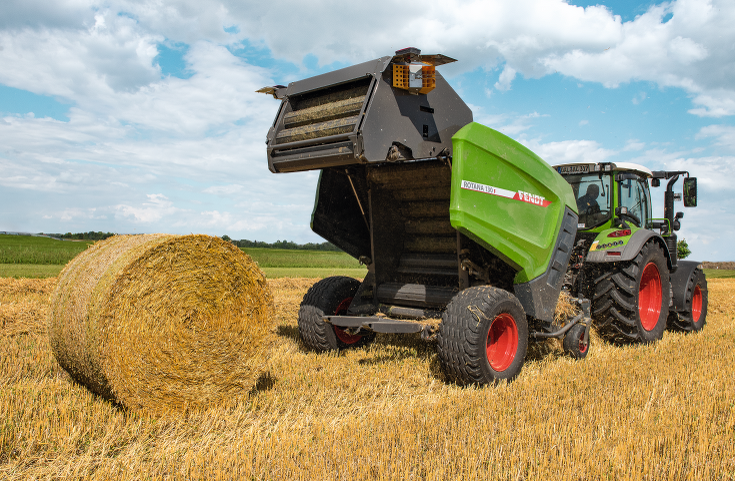
Best locking for the best bales
All Fendt round balers have a mechanically-locked bale chamber. The fact that the secure locking latch prevents the tail gate from swinging out always results in solid and well-formed bales. The bale density is determined through precise measurement of the tailgate hook position. The sensors on both sides accurately measure the bale density and indicate to the operator whether to drive right or left to form a consistent bale.
Practical details make all the difference:
Fendt round balers have genuine unique selling points which pay off in practical use. For example., the bale chambers have self-cleaning bearing housing for a longer bearing life. Moisture and any unwanted debris are removed by the wipers in the bearings. Therefore, it is not only bearings that are always clean, but also tracks, and the service life is not reduced.
Stable guidance for short downtimes:
Two stable cylinders are used to swing the bale chamber's tail gate open and shut. All you need is a single-acting control unit. All of this makes for short drop times, and a Fendt Vario tractor will enable you to smoothly and steplessly raise the working speed within seconds. That's why Fendt tractors and round balers make the perfect team.
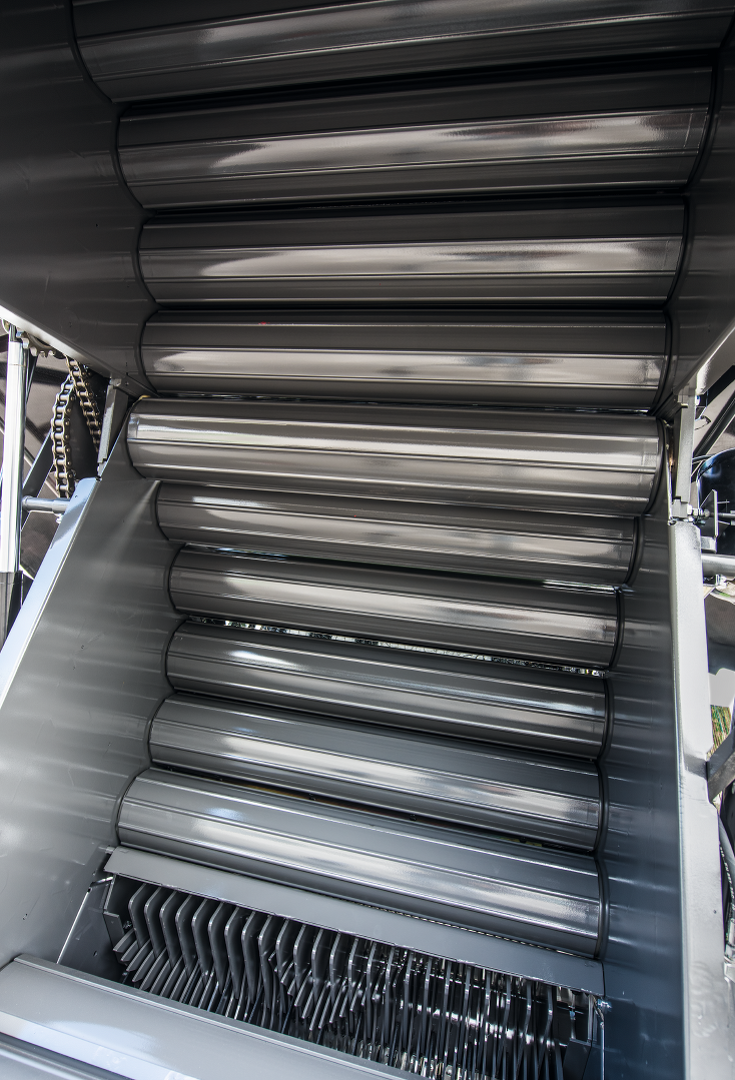
3 ribs of the PowerGrip steel rollers are constantly in contact with the bale and ensure reliable rotation.
The bearings make all the difference
"Flexibility" is the watchword when it comes to absorbing massive force in different directions. As the bales expand in the bale chamber, this pressure is exerted onto the chamber's side panels and moves them slightly. This is why all Fendt round balers have special bearing housings to counter this effect. Housings are attached to the drive side which allow the bearings to move slightly, but hold the baling rollers in place longitudinally so that the drive sprockets remain in line. On the non-drive side, the bearings can move longitudinally to counter and absorb the bale pressure on the side panels of the baling chamber. This massively improves the bearing's durability.
